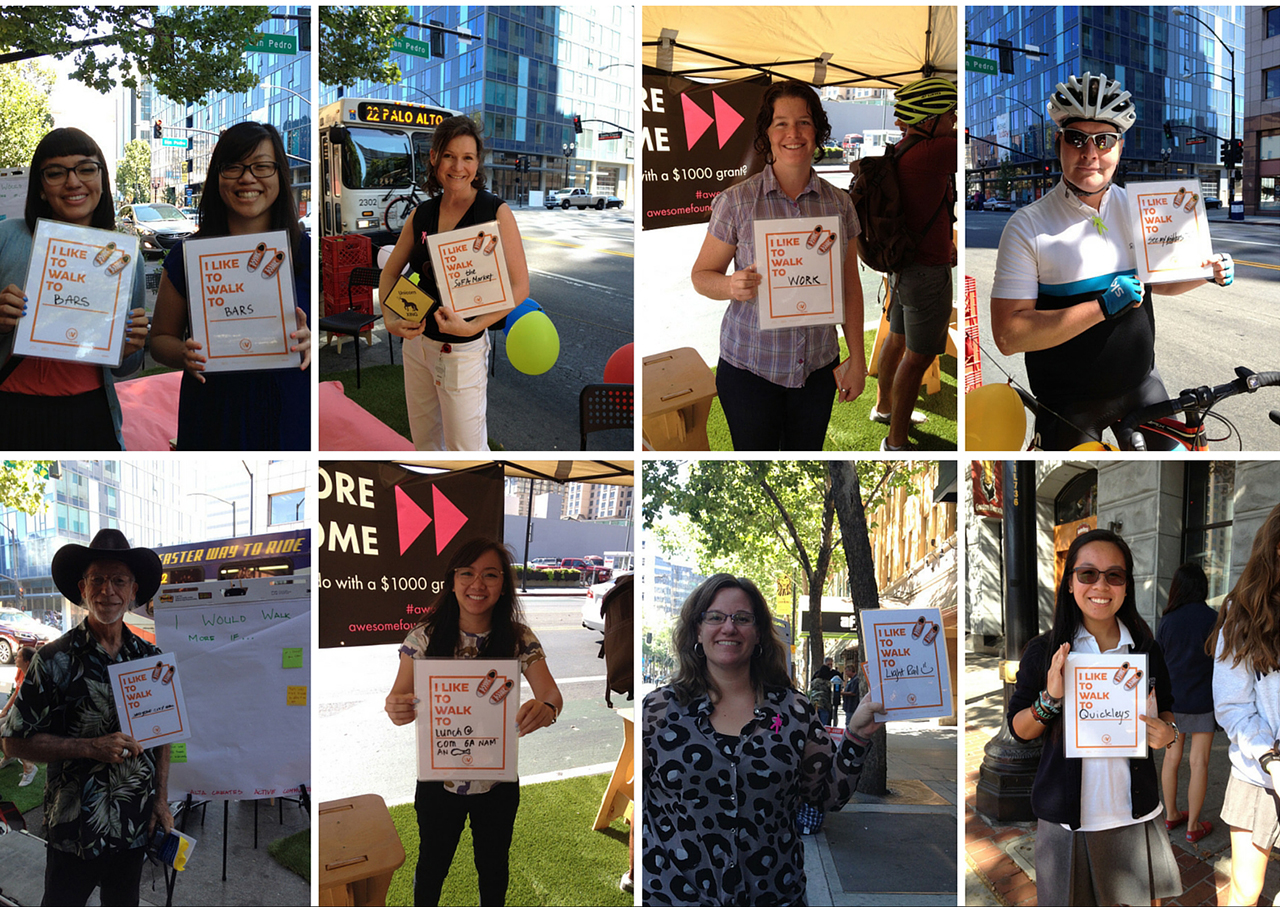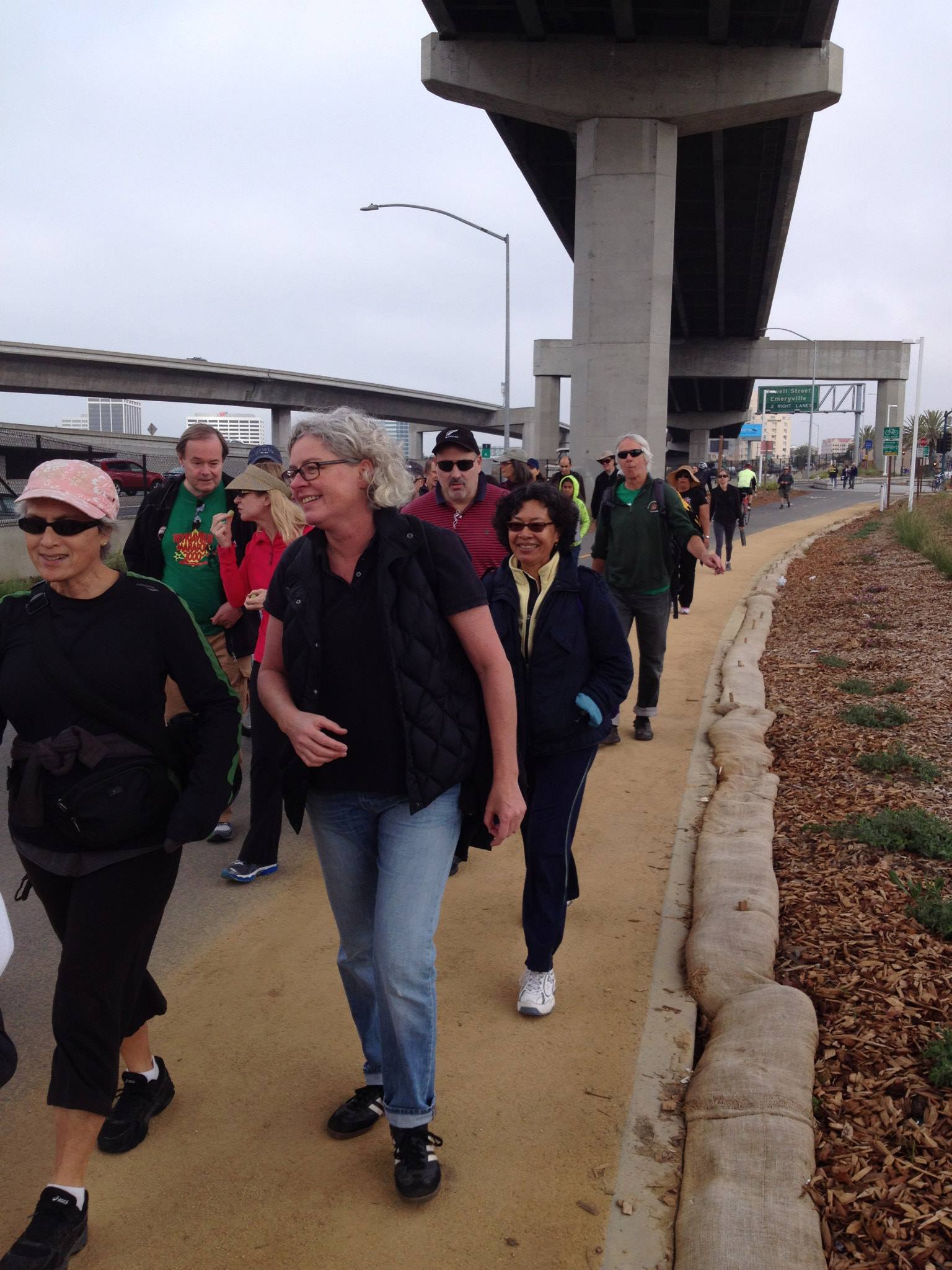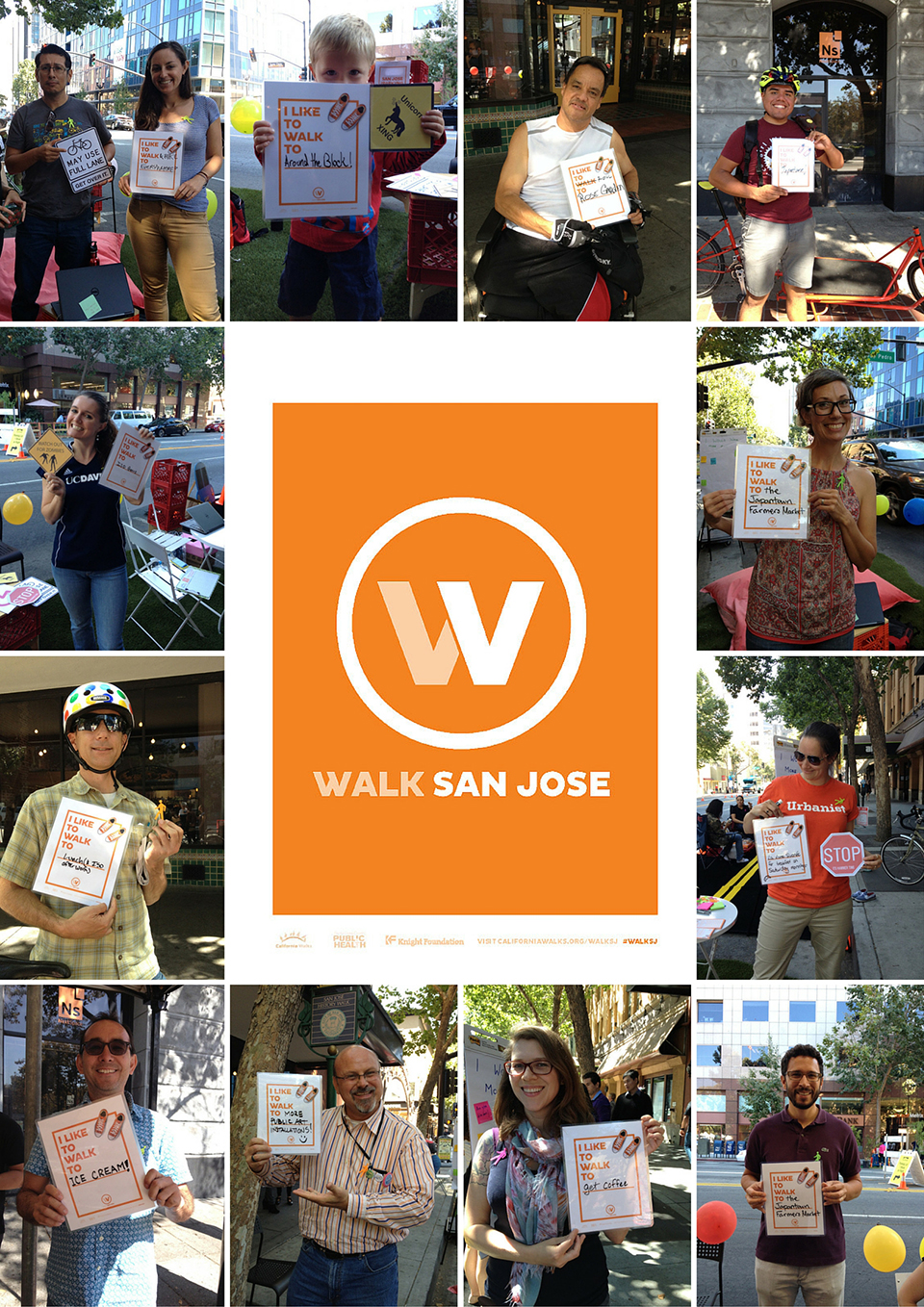
How California Walks is inspiring San Jose residents to experience the city from a new perspective
Photos courtesy of California Walks.
Areas of San Jose are a lot more walkable than the average resident may think – and a statewide advocacy group is helping increase awareness about it.
California Walks, which advocates for pedestrian safety and walkable communities throughout the state, is working on “Walk San Jose,” an initiative to identify and create walking loops that people can explore. Knight Foundation supported the project with $30,000.
Part of the goal is “having more of a conversation around the value of walking in San Jose and the value of walkable communities,” said Jaime Fearer, the San Jose-based planning and policy manager for California Walks.

The Walk San Jose initiative is creating six small cards that feature walking loops as a free resource that people will be able to pick up at coffee shops, office buildings, hotels, the convention center and other locations around the city. Two routes have been completed: The first loop focuses on exploring civic, art and architectural history in Downtown San Jose, while the second loop focuses on the city’s visual and performing arts, education and innovation.
“They’re really meant to be community-owned, community-based asset maps,” Fearer said. “So the community is involved in deciding what they want to highlight and where the loop goes.”
The planning process includes a “walk audit,” where members of the community can help think about what makes a walkable route and community. The audit looks at elements such as the condition of a sidewalk, level of daytime shade, adequate nighttime lighting and whether the area is full of trash or blighted buildings.
Fearer said additional loops are in development around the city’s Guadalupe River Trail, as well as in the Mayfair, Japantown and Willow Glen neighborhoods. When each loop is completed, there will be a celebratory community walk with food and drink at the end.

Additional funding from the Santa Clara County Public Health Department is allowing the loop cards to be translated into Spanish and Vietnamese – an important component for a city where at least 56 percent of residents speak a language other than English at home.
Walk San Jose was partly inspired by a similar California Walks affiliate member initiative in Southern California, “Walk Long Beach,” which features 30 loop cards. Fearer said San Jose – which is a much bigger city – has a lot of potential to develop more cards. The initiative was also partly inspired by Jane’s Walk, a Knight Foundation-supported project that supports free, locally organized walking tours.
San Jose has a history of community members who have been passionate about walking and walkability in the city, Fearer explained. But the challenge continues because of the sprawling way the city has traditionally grown, and she described the loop cards as an “encouragement tool.”
The health and environmental benefits of walking might be obvious. But Fearer explained that there are also mental health benefits of being outside exploring your neighborhood and meeting neighbors.
“It’s really getting to know your community on a different scale – on a human scale,” she said. “It’s really reclaiming our cities and our neighborhoods for the human scale versus the automobile scale.”
Vignesh Ramachandran is a Bay Area-based freelance journalist. He can be reached via email at [email protected].
Recent Content
-
Community Impactarticle ·
-
Community Impactarticle ·
-
Community Impactarticle ·


